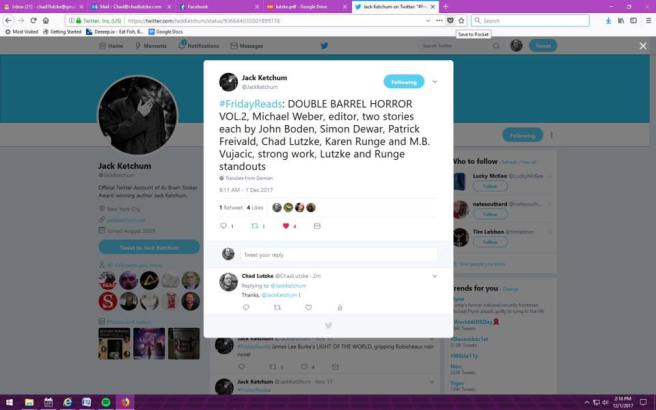The costs for Taxpayers only continues to increase while the proposed Foxconn manufacturing facility has not yet materialized.
 No doubt, WI Governor Scott Walker continues to make history!
No doubt, WI Governor Scott Walker continues to make history!
OOPS! That sort of talk is strictly verboten.
The new history is forcing WI Taxpayers to fund one of the most expensive and potentially unconstitutional and destructive jobs programs in the entire World!

By Allan Golombek
December 26, 2017
The people of Wisconsin gave Taiwan-based Foxconn a billion-dollar gift for Christmas, on top of $3 billion they had already promised the company. So far, they haven’t even received a thank-you card – just the promise of the most expensive taxpayer-funded jobs in history.
This summer, Wisconsin politicians announced they had lured a new Foxconn LCD flat panel plant to southeast Wisconsin with a $3 billion incentive package, in return for a $10 billion investment from the company. But, like many government giveaways to the corporate sector, the bill to taxpayers has gotten even bigger. The Wisconsin Economic Development Agency agreed to a significant reduction in Foxconn’s commitment, down to $9 billion. This was after the state legislature okayed the deal without nailing down the details.
The state legislative bureau estimated it would take 25 years – until 2043 – until the Wisconsin government received enough in additional tax revenues to match the initial $3 billion investment. At $4 billion-plus, the break-even point will recede even further into the future.
But Wisconsinites aren’t the only ones who will pay the tab. At between $250,000 and $1 million per job, the Foxconn deal will raise the entry stakes for every jurisdiction seeking to attract new investments – or perhaps even just to retain them. Just like the value of your home is determined by how much the house down the street sold for, the going rate for government giveaways to companies is based partly on how much other governments have demonstrated a willingness to pay.
The steep price Wisconsin has committed to paying to host Foxconn will ripple across other states and municipalities. In 2015 alone, state and local business incentives came to $45 billion, including tax credits, property tax abatements, investment tax credits, R&D tax credits and customized job training, according to the W.E. Upjohn Institute for Employment Research. And the cost has been going up; business incentives have more than tripled since 1990.
And the Wisconsin state government is not even sure what the full price is yet – or how many jobs they will actually be getting for it. The village and county where the plant is to be located have chipped in another $764 million in tax incentives. The state has also agreed to spend over $400 on new roads and road widenings and improvements to facilitate the plant. (Although some of these transportation improvements were anticipated eventually.)
Local residents don’t just get to pay for the boondoggle through their taxes; they can also expect to pay increased electricity rates. American Transmission Company has announced it will spend $140 million to build a new substation to provide electric power to Foxconn, with the cost to be charged to electricity customers in southeast Wisconsin.
How many jobs will the deal actually create? The notion of 13,000 jobs is actually a goal, not a guarantee. The legislative bureau acknowledged that some estimates place the probable payroll as low as 3,000. The agency tasked with holding Foxconn accountable has a history of failing to verify job-creation claims and rewarding companies that fall short of quotas, according to state audits. How long will the jobs actually last? Foxconn has launched an extensive commitment to automation and robotics, eliminating tens of thousands of jobs in China with the introduction of specially-designed “Foxbots” – with the stated goal of eliminating almost their entire global workforce.
Moreover, how many of the jobs will actually go to residents of Wisconsin – the people paying for the party? The legislative bureau had estimated that about 10 percent of Foxconn workers would be residents of nearby Illinois. But a preliminary analysis commissioned by the Wisconsin Economic Development Corporation estimated as many as half of the construction workers and Foxconn workforce could come from outside the state.
The most ironic aspect of the deal is that the biggest shortage the state’s economy faces is not jobs, but the people with the skills needed to perform them. “We need bodies,” Gov. Scott Walker has admitted. Actually, they need skilled people. So much so that Walker has pledged to spend $6.8 million on an ad campaign to help attract residents from out of state to work for Foxconn. The state will spend $20 million on worker training over two years to ensure a pipeline of workers for Foxconn – and for small businesses that lose employees to the massive plant.
Rather than investing in people, too many governments are giving money to corporations in the pursuit of jobs that may not last long and may never return the investment. Wisconsin is setting the pace right now with its multi-billion dollar giveaway to Foxconn. Maybe it is time for governments to kick the habit. Sometimes, just saying ‘no’ could be a viable strategy.
Allan Golombek is a Senior Director at the White House Writers Group.
###
From Urban Milwaukee & Murphy’s Law:
 Foxconn Subsidy Now Exceeds $4 Billion
Foxconn Subsidy Now Exceeds $4 Billion
Government subsidy keeps increasing while Foxconn’s required investment has declined.
When the state deal with Taiwanese company Foxconn was first announced, the numbers were bold and clear: the company would get $3 billion in subsidies from the state and in turn would build a $10 billion plant and create 13,000 jobs.
That stood not just as the largest subsidy in state history, but the largest government subsidy to a foreign company in American history.
But the giveaway has continued to grow, while Foxconn’s required investment has shrunk. After legislation was passed approving the deal without determining the specifics, the Wisconsin Economic Development Agency hammered out the details that dropped Foxconn’s required investment in its new plant to just $9 billion. The Journal Sentinel has reported this, yet its stories keep referring to the $10 billion plant.
Meanwhile the Village of Mount Pleasant and Racine County agreed to give Foxconn $764 million in tax incentives. The measure also commits the state to paying 40 percent of local governments’ expenses for the plant “if ever called upon to do so.”
The state will also spend $30 million on a new two-mile road east of I-94 to be called “Wisconn Valley Way,” and aimed at easing traffic congestion near Foxconn’s plant.
And last week we learned the Walker administration will also siphon $134 million from the state transportation fund to widen and improve several local roads near the future Foxconn factory, as a report by the nonpartisan Legislative Fiscal Bureau disclosed. The Department of Transportation didn’t give the fiscal bureau an exact estimate for the local Foxconn roadwork when it was requested, but the bureau found the information “referenced in a grant application for $246.2 million in federal funds for the nearby I-94 project,” the Wisconsin State Journal reported.
Those roads include County KR, Braun Rd. and state Highway 11, according to Kevin Muhs, Deputy Director of the Southeastern Wisconsin Regional Planning Commission. The local roads will be turned into state highways so state transportation can be used on them.
The Foxconn development has also pushed the state to spend $252 million to expand I-94 from six to eight lanes from College Ave. in Milwaukee County south to Highway 142 in Kenosha County. While it was anticipated this would eventually be done, it was far from guaranteed, given huge shortfalls in the transportation fund and delays in other projects. What is certain is that the I-94 widening and $134 million in local road improvements by the state will lead to longer delays or cancellations of other projects in the state.
The state has also applied for $240 million federal grant to help pay for the I-94 widening.
Gov. Walker has also pledged to spend $6.8 million on an ad campaign to help attract out-of-state residents for Foxconn. “We need bodies,” he confessed. The Fiscal Bureau had estimated that about 10 percent of Foxconn workers will be Illinois residents, but a preliminary analysis commissioned by Walker’s Wisconsin Economic Development Corp. estimated as many as half of the construction workers and Foxconn workforce could come from other states, primarily Illinois, as the State Journal reported.
Meanwhile American Transmission Company has announced it will build a new substation to provide electric power to Foxconn at a cost of $140 million, which will then be charged to the 5 million customers of We Energies in southeast Wisconsin. The project “essentially would ask the public to contribute still more to Foxconn through higher electric rates,” the Journal Sentinel reported.
Foxconn has also been exempted from environmental regulations, and some experts believe this will cause pollution that might eventually require remediation paid for by taxpayers. And Foxconn’s newest demand is for its plant to be treated as a foreign trade zone, which could reduce its customs duties and cut the company’s costs. Odds are, it’s not the last demand the company will make.
Ald. Bob Bauman tallied the total costs for taxpayers in a speech before a Common Council committee and concluded it would cost $4.5 billion. That might be a tad high, unless you believe the I-94 widening would have never happened. But even without it, the total cost is nearly $4.1 billion, to get a $ 9 billion plant. That’s astounding: a cost of $1,774 per household in Wisconsin.
Back when the subsidy was $3 billion the Fiscal Bureau estimated it would take till 2043 or later for taxpayer to recoup all the money being spent, and even that was based on “speculative” figures on spinoff jobs, it noted. At $4.1 billion it’s safe to say it will take until 2050 to recoup those costs.
###
A Video About Unsustainable Systems, Growth, Technology, The Market & Governments.
Advertisements Share this:





